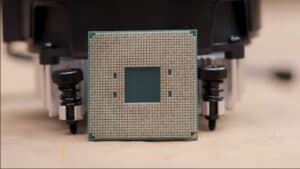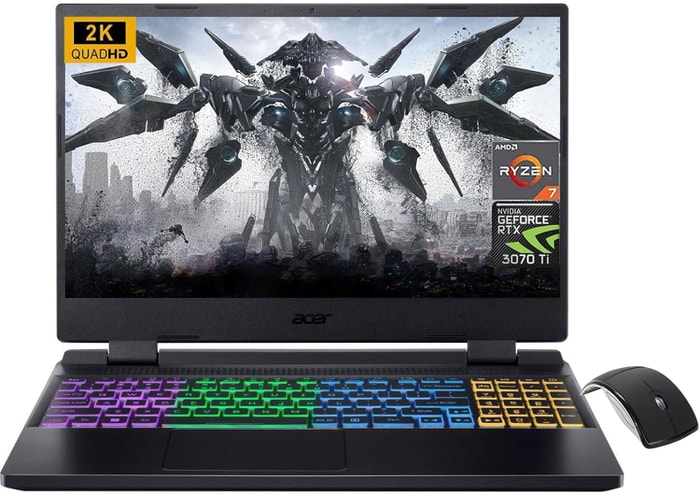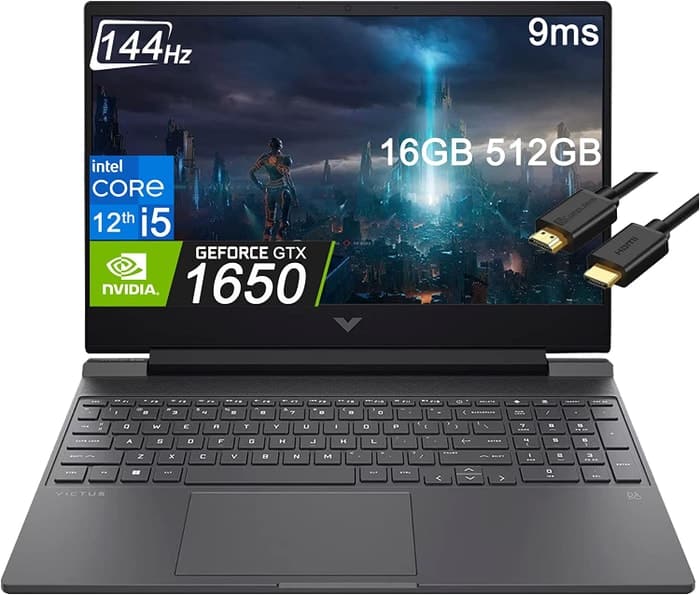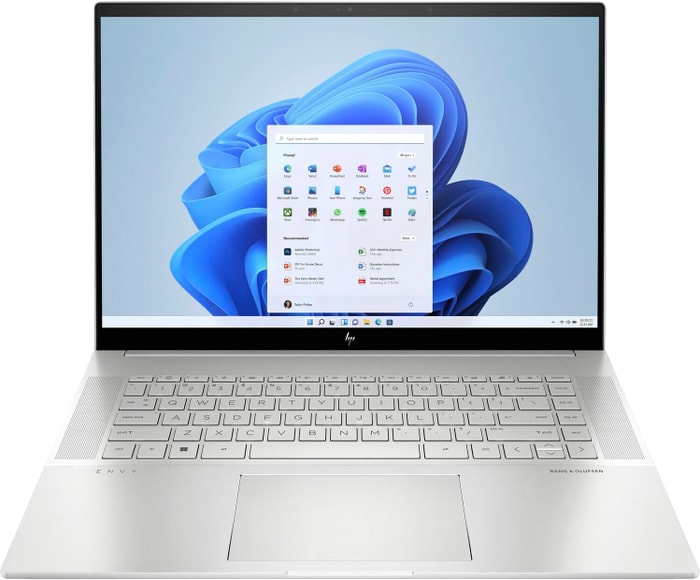As someone who understands the importance of finding the perfect laptop for various purposes, I am here to help you select the best laptop for elementary students. Our young learners have unique requirements and preferences when it comes to technology. In a world where digital literacy is becoming increasingly important, it's essential to choose a laptop that caters to their educational and developmental needs while also being user-friendly and engaging.
To find the ideal laptop for elementary students, I have reviewed an extensive spreadsheet of recent laptop releases, comparing specs, professional and user-generated reviews, and factoring in topic-specific requirements and price ranges. I have also considered the software and applications that are most relevant to this age group, such as educational tools, parental controls, and creative programs that will foster their growth and development.
As a knowledgeable expert in laptops, I know the importance of factors like durability, battery life, and ease of use. Considering the unique demands of elementary school-aged children, I will prioritize laptops that are sturdy, have long-lasting battery life, and feature a user-friendly interface. Additionally, I have taken into account the need for seamless integration with educational platforms, such as Google Classroom or Microsoft Teams, to ensure that the laptop you choose will not only enhance your child's learning experience but also make it easier for them to collaborate with their peers and teachers. With this guide, you will be well on your way to finding the best laptop for elementary students that will support their academic and creative endeavors.
Power Up: Understanding Laptop Processors for Elementary Students

In recent years, the laptop market has seen a shift towards more efficient and powerful processors. Apple has released laptops with their ARM-based M1, M2, M2 Pro, and M2 Max chips, while AMD has captured 20% of the laptop CPU market with their Ryzen processors. Meanwhile, Intel's 13th-generation Core processors have already been released, but their 12th-generation CPUs can still provide value for those who don't need cutting-edge performance.
For elementary school students, a laptop with a good CPU is important, but it's not the only thing that matters. If you're looking for a Windows laptop, then the CPU will be more important than the GPU since most elementary school software doesn't require much graphics power. However, in this section, we'll focus on MacBooks.
When looking for a processor, it's essential to consider multiple cores, frequency, and thermals. I use Cinebench R23 to compare different processors since it's one of the most popular benchmarks and it's relatively easy to find scores for laptops.
For a budget option, prioritize battery life over performance. For example, the M1 chip in the MacBook Air can provide excellent battery life while still offering solid performance. If you're willing to spend some money, go for an i5 or AMD Ryzen 5 processor. These offer good performance for most tasks while still being relatively affordable. Finally, if you want a high-end laptop, go for an i7 or AMD Ryzen 7 processor (or higher if you can afford it). These will offer the best performance and are well-suited for demanding tasks such as video editing.
Here are our recommendations for the right processor for elementary school students' laptops:
| Price Point | Processor | Recommended For |
|---|---|---|
| Minimum | i3-1115G4 | Basic tasks and browsing |
| Recommended | i5-1135G7 or Ryzen 5 | Most tasks and light gaming |
| High-end | i7-11370H or Ryzen 7 | Demanding tasks and video editing |
Ultimately, the right processor for your needs will depend on your budget and what tasks you need to perform. However, these recommendations should give you a good starting point when deciding on the right laptop processor for elementary students.
Powering up the Pixels: Choosing the Right Graphics Card for Your Child's Laptop
When it comes to laptops for elementary students, the graphics card is not the most crucial component to consider. In fact, most children in this age range will not require a dedicated GPU. If you are unsure whether your child needs a dedicated graphics card, then you are probably better off without one.
It's important to note that Nvidia has discontinued the Max-Q label for its RTX graphics cards. Instead, the wattage limit is used to indicate reduced performance levels. This means that there is a wide variance in graphics performance even in laptops with the same GPU chipset.
For elementary school work, we should focus on the CPU and RAM, which are essential for running productivity software. However, if your child wants to play games on their laptop, make sure it has a dedicated graphics card (not integrated).
If you are in the market for a laptop with a discrete graphics card, here are my recommendations grouped by price bracket:
| Price Bracket | Recommended GPU |
|---|---|
| Minimum | GeForce GTX 1650 |
| Recommended | GeForce RTX 3050 |
| High-end | GeForce RTX 2060 |
It's important to note that having a fast GPU can affect battery life. So, if your child is not using the laptop for gaming or graphic-intensive work, then it may not be worth investing in a laptop with a powerful discrete GPU. Ultimately, the right laptop for your child will depend on their specific needs and use cases.
Boost Your Little One's Learning: How Much RAM Does an Elementary Student's Laptop Need?
As someone who grew up using computers in the early 2000s, it's amazing to see how far laptop technology has come. Today, most mid-range laptops come with at least 16 GB of RAM, with high-end machines having 32 GB or more. Additionally, the latest-gen Intel and AMD CPUs support DDR4 and DDR5 memory, although DDR5 is still quite expensive and needs time to mature as a technology.
RAM is one of the most important components in a laptop for elementary school students. While it's not as critical as the CPU or GPU, it still makes a difference in performance. The amount of RAM you need depends on your needs and budget. If you're looking for a basic computer for browsing the web, watching videos, and playing some games – 8 GB should be more than enough. If you're looking for a more powerful machine that can handle demanding tasks such as video editing or 3D rendering – 16 GB would be ideal. Finally, if you're looking for a high-end laptop with all the bells and whistles – 32 GB will be perfect.
It's worth noting that laptops usually come with DDR4 memory, but DDR5 is slowly making its way into the market, so keep an eye out for laptops that support it; they'll have an "X" after their name (e.g., DDR5). However, for elementary school students, DDR4 will be more than sufficient.
In addition to RAM, there are a few other specs to consider when choosing a laptop for elementary school students. These include the CPU, GPU, storage, and battery life. However, when it comes to RAM specifically, there are a few benchmarks you can look at to determine if a laptop has sufficient memory. Geekbench and PCMark are two popular benchmarks that can give you an idea of a laptop's performance.
Here are some recommendations for laptop RAM depending on your budget:
| Budget | Recommended RAM |
|---|---|
| $300-$500 | 8 GB |
| $500-$1000 | 8-16 GB |
| $1000+ | 16-32 GB |
Ultimately, the right amount of RAM for an elementary school student's laptop will depend on their specific needs and budget. However, with these guidelines, you should be able to make an informed decision and choose a laptop that will serve your child well throughout their school years.
Laptop for Your Little Einstein: Answering Your FAQs
Q: What are the best laptops for elementary school students?
For elementary school students, we recommend laptops that are lightweight and durable, with good battery life and a reasonable price. Some of the best options in 2023 are the ASUS Zenbook, Lenovo Legion 5 Pro, GIGABYTE AORUS 15 XE4, and ASUS ROG Strix Scar.
What are the features to look for in a laptop for elementary students?
When looking for a laptop for elementary students, it's essential to consider factors such as durability, weight, battery life, processing power, and storage space. We recommend a processor of at least an i3-1115G4, graphics of at least a GeForce GTX 1650, and a minimum of 8 GB RAM.
How much RAM is needed for a laptop for elementary students?
For elementary school students, we recommend a laptop with a minimum of 8 GB RAM. However, a laptop with 16 GB or 32 GB of RAM would be suitable for students who multitask or use more demanding applications.
What is the best operating system for laptops for elementary school children?
The choice of operating system depends on the student's needs and personal preference. However, we recommend Windows or macOS for elementary school children as they offer a user-friendly interface and compatibility with essential applications.
What is the ideal weight for a laptop for elementary students?
For elementary school students, we recommend a laptop with a weight of no more than 3.5 pounds. This weight ensures that the laptop is lightweight and easy to carry around, making it suitable for students who need to take their laptop to and from school.
What is the best screen size for a laptop for elementary school children?
We recommend a laptop screen size of 11 to 14 inches for elementary school students. This size provides an appropriate screen real estate while still being easy for children to view and handle.
Is a touchscreen necessary for laptops for elementary school students?
A touchscreen is not necessary but can be useful, especially for students who need to interact with the laptop using touch input. However, it may not be a priority for students who mainly use the laptop for basic tasks such as browsing and word processing.
What is the battery life needed for a laptop for elementary students?
For elementary school students, we recommend a laptop with a battery life of at least 6 hours. This battery life should be enough to power the laptop throughout the school day without the need for frequent charging.
Can laptops for elementary school students be used for gaming?
Yes, laptops for elementary school students can be used for gaming, but it's essential to consider the laptop's graphics card and processing power. For light gaming, a laptop with a GeForce GTX 1650 would be sufficient. For more demanding games, a laptop with a GeForce RTX 3050 or higher would be necessary.
How to choose a laptop that suits an elementary student's needs?
When choosing a laptop for an elementary student, consider the factors discussed above, such as weight, durability, battery life, processing power, and storage space. Also, consider the student's needs and activities, such as whether they will use the laptop mainly for schoolwork or more demanding tasks such as gaming. Lastly, take the price point into account, and choose a laptop that offers the best balance of features and affordability.
4 Best Laptops for elementary students
 $680
$6801.acer Nitro 5
elementary students laptop- Exceptional processor (Ryzen 7 6800H)
- Very good graphics card (RTX 3070 Ti)
- Awesome display (15.6)
- Terrific memory amount (32GB)
- No IPS Panel (worse viewing angles)
Alternatives

HP Victus 15t
- Low price
- Solid array of ports
- Weak GPU yields unsatisfactory frame rates
- Average display and webcam quality

2.ASUS TUF Dash F15
Affordable and powerful, the ASUS TUF Dash F15 is a great option for elementary students on a budget.- Lightweight and well built
- Good range of screen options
- More powerful than previous generation
- Decent battery life
- Some quirks affecting ergonomics
- Ports crowded on left edge
- Be cautious of FHD 144Hz screen option
Summary
The ASUS TUF Dash F15 is a lightweight and well-built laptop that offers good performance and a competitive price point. It has a range of screen options and decent battery life, making it a solid choice for elementary students. Just be cautious of the FHD 144Hz screen option and opt for the FHD 300Hz display if available.
Reviews
Alternatives

Lenovo Legion 5i Pro 16
- Stylish, sleek form factor
- Gorgeous display
- Webcam quality is poor
- No biometric features
 $1,800
$1,8003.HP Envy 16
HP Envy 16: A heavyweight desktop replacement with high-end features for creative apps and light gaming.- Plenty of CPU and GPU power
- New 120Hz screen refresh rate
- High-res webcam
- Sleek design
- Merely adequate base screen
- Optional OLED has fewer pixels than before
- Bulky and heavy
Summary
The HP Envy 16 offers plenty of power for CPU and GPU, a new 120Hz screen refresh rate, a high-res webcam, and a sleek design. However, it falls short with its base screen and optional OLED, and it's bulky and heavy.
Reviews
Alternatives

ASUS ROG Strix G15
- Impressive CPU and GPU performance
- High-quality display
- Limited connectivity options
- Potential for coil whine in certain situations

4.Lenovo Legion Pro 7i 16
Lenovo Legion Pro 7i 16: The gaming laptop that delivers impressive performance and value for money.- Strong overall performance
- Big, bright, and fast display
- Per-key RGB lighting
- Some flex to keyboard deck
- Poor battery life
Summary
The Lenovo Legion Pro 7i 16 is a gaming laptop that offers powerful performance with its i9-13900HX processor and RTX 4090 graphics card. Despite its sleek design and fair price, it does have limitations in terms of GPU performance and battery life.
Alternatives

HP Omen 17
- QHD display with 165 Hz
- Expandable working memory
- Slightly below-average performance for a RTX 4080
- High noise level
Table of the Best Laptops for elementary students
| Laptop | Price (approx) |
| acer Nitro 5 | $680 |
| ASUS TUF Dash F15 | $1,160 |
| HP Envy 16 | $1,800 |
| Lenovo Legion Pro 7i 16 | $3,390 |


